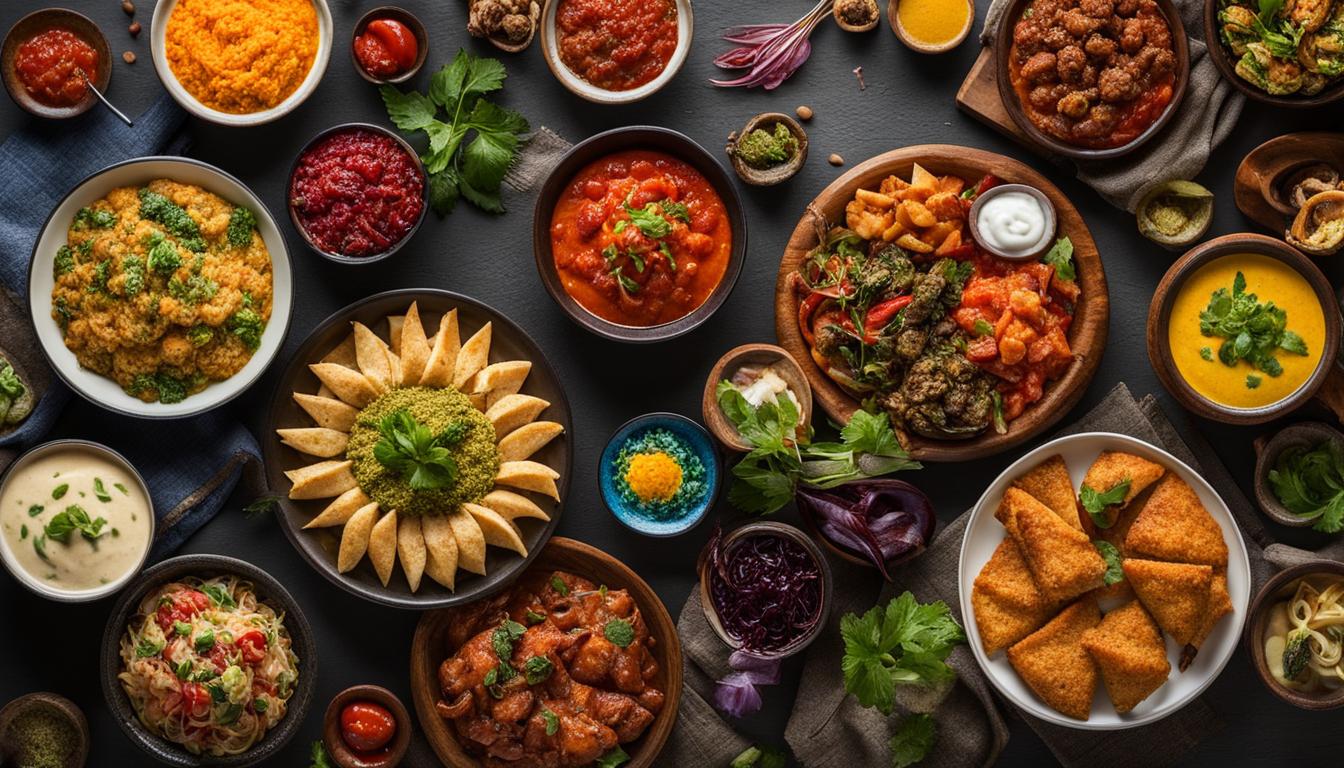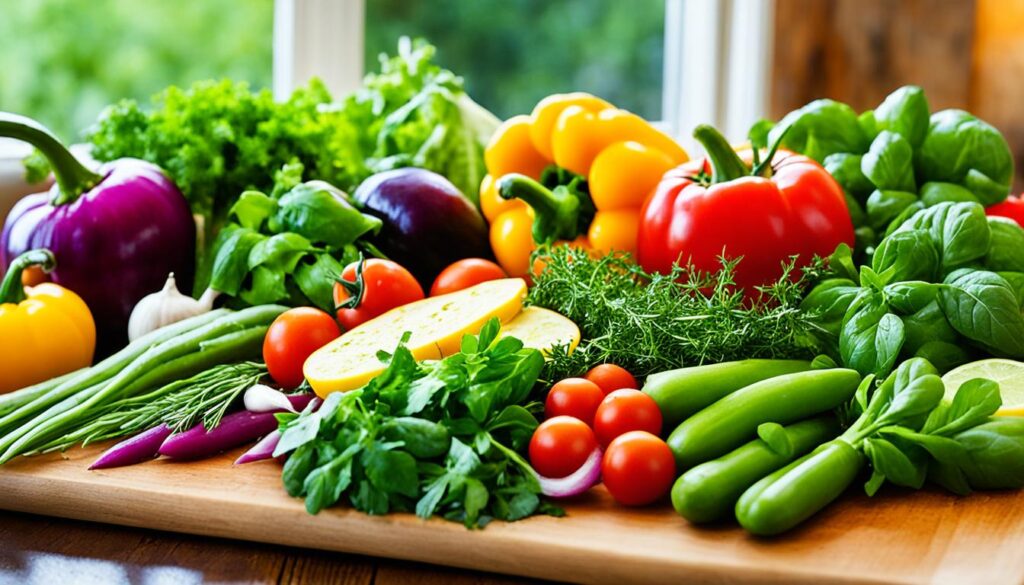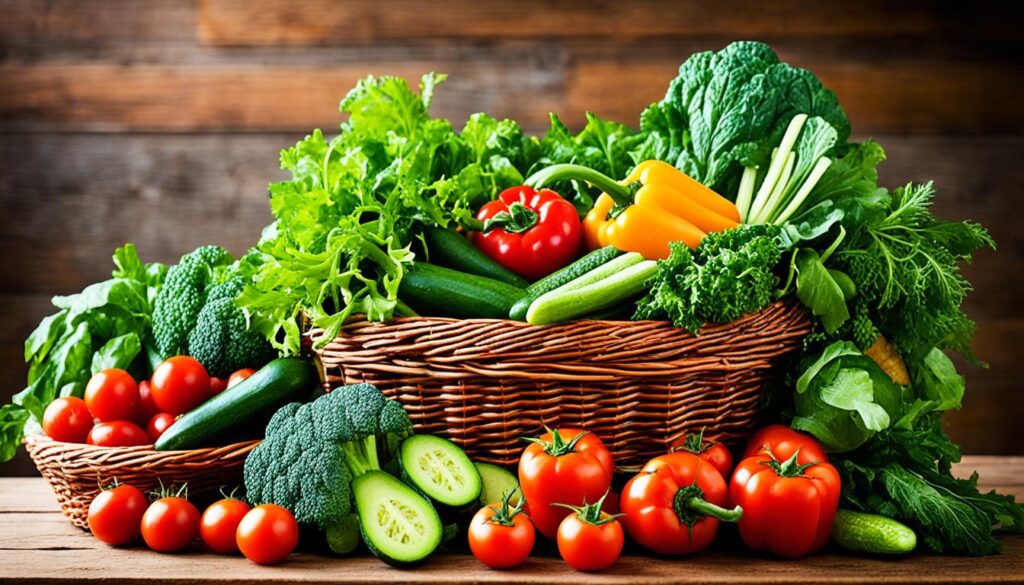International cuisine offers a culinary adventure like no other, granting us a glimpse into the diverse flavors and ingredients that shape cultures around the world. It is a celebration of global gastronomy, showcasing the richness and variety of culinary traditions influenced by immigration and migration.
From aromatic Indian curries to delicate Japanese sushi, each dish tells a story of a people and their distinctive culture. Trying international cuisine provides not only a delightful gastronomic experience but also an opportunity to learn about different societies and their culinary heritage.
Key Takeaways:
- International cuisine reflects the influence of immigration and migration on culinary traditions.
- Exploring international cuisine allows us to learn about different cultures through their food.
- Each region offers its unique flavors and ingredients, contributing to the global gastronomic tapestry.
- International cuisine has given rise to fusion dishes, blending culinary traditions from diverse cultures.
- Traveling through international cuisine breaks cultural barriers and fosters a sense of global community.
The Cultural Significance of International Cuisine
International cuisine is much more than just a culinary experience; it is a celebration of the diverse cultural heritage that shapes our dining tables. By indulging in dishes from different countries, we embark on a flavorful journey that not only tantalizes our taste buds but also educates and enlightens us about the people and their traditions.
Each bite of international cuisine reveals the intricate tapestry of influences and migrations that have shaped civilizations throughout history. It serves as a testament to the cultural significance and culinary traditions that have been passed down through generations. Even seemingly homogeneous cultures are revealed to be a beautiful blend of countless influences, resulting in unique flavors and techniques.
“Food is our common ground, a universal experience.” – James Beard
| Cultural Significance | Culinary Traditions | Diversity |
|---|---|---|
| International cuisine bridges gaps and fosters cultural understanding by promoting dialogue and appreciation for different traditions. | Through culinary traditions, communities preserve their cultural heritage and pass down their values and beliefs. | Each country’s diverse landscapes and people contribute to a wide range of ingredients, flavors, and cooking techniques. |
| By engaging with international cuisine, we celebrate the richness and diversity of our global community. | Recipes handed down from generation to generation preserve cultural identities and provide a sense of belonging. | Exploring international cuisine allows us to experience the world’s vast array of flavors and culinary delights. |
In a world that is increasingly interconnected, international cuisine serves as a reminder that our shared culinary experiences can bring people together, breaking down barriers and fostering connections. It allows us to appreciate the intricate fabric of our global society, celebrating the cultural tapestry that defines us.
Fusion Dishes and the Blending of Culinary Traditions
The rise of fusion dishes in international cuisine has brought a delightful fusion of flavors from different culinary traditions. These unique dishes showcase the art of blending cultures and celebrating diversity on our plates.
The Essence of Fusion Dishes
Fusion dishes are a creative combination of ingredients and cooking techniques from different culinary traditions. They offer a refreshing twist to traditional recipes by incorporating elements from disparate cultures. The result is a harmonious blend of flavors that tantalizes the taste buds and transports diners on a culinary journey.
**Did you know?** Fusion dishes are not limited to specific cuisines but can be found globally, highlighting the world’s love for culinary experimentation.
Cultural Exchange Through Fusion
Fusion dishes exemplify the power of food to bridge cultural gaps and create connections. By merging culinary traditions, fusion dishes celebrate the shared heritage of diverse cultures and promote cross-cultural understanding. They allow us to experience the richness and beauty of different cuisines while breaking down barriers and fostering a global community.
“Fusion dishes not only satisfy our taste buds but also remind us of the interconnectedness of our world. They pave the way for cultural appreciation and culinary exploration.” – Chef Maria Rodriguez
Blending Traditions on the Plate
The blending of culinary traditions in fusion dishes is a testament to the evolving nature of gastronomy. Chefs experiment with ingredients, techniques, and presentation styles to create innovative dishes that ignite the senses. Regional flavors meet global influences, resulting in a unique and unforgettable dining experience.
Explore the Fusion Delights
Discovering fusion dishes opens up a world of gastronomic adventure. From Japanese-inspired sushi burritos to Korean barbecue tacos, the possibilities are endless. These dishes offer a delightful fusion of flavors, textures, and cultural influences that showcase the ingenuity and creativity of culinary professionals.
**Ready to embark on a fusion culinary journey?** Try this mouthwatering fusion dish: Spicy Thai Tacos. This delectable creation combines the bold flavors of Thai cuisine with the handheld convenience of tacos. The filling features Thai-style marinated grilled chicken topped with a refreshing slaw of julienned green mango, cilantro, and peanuts. The finishing touch is a drizzle of spicy Sriracha aioli for an extra kick. Enjoy the explosion of flavors that brings together the best of Thai and Mexican cuisines!
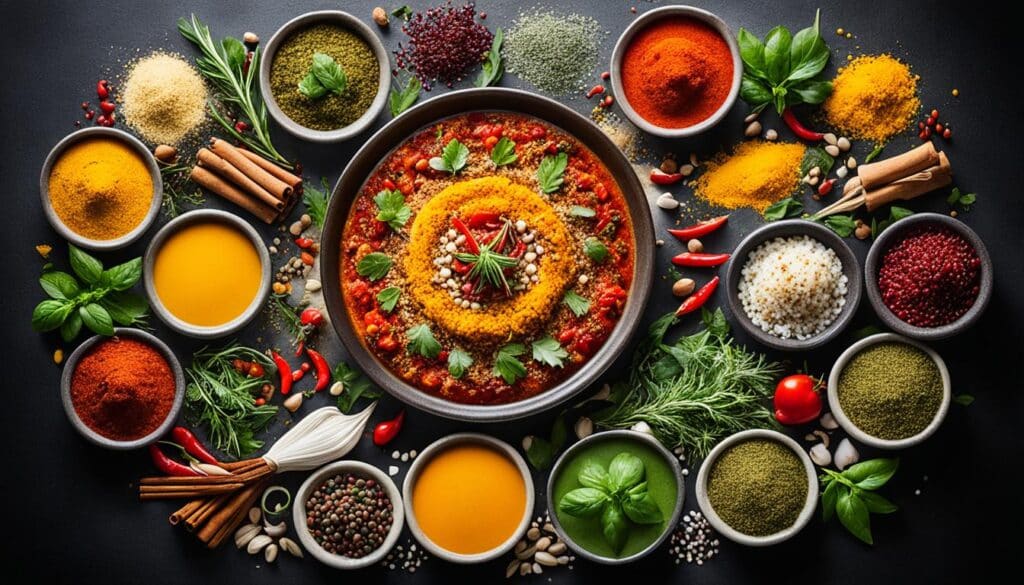
Italian Cuisine: Beyond Pasta and Pizza
When we think of Italian cuisine, the first dishes that come to mind are often pasta and pizza. However, Italian gastronomy extends far beyond these beloved classics. Each region in Italy contributes its unique flavors and culinary traditions to the rich tapestry of Italian cuisine. From the fresh seafood of Sicily to the hearty stews of Tuscany, there is a world of regional flavors waiting to be explored.
Italian cuisine is known for its simplicity and the celebration of fresh, high-quality ingredients. It embraces the concept of la cucina povera, which translates to “the poor kitchen” and highlights the use of humble, yet flavorful ingredients. From the luscious tomatoes of Naples to the fragrant basil of Genoa, Italian dishes often rely on the natural flavors of the ingredients to shine.
The culinary traditions of Italian cuisine are deeply rooted in history and influenced by various cultures. Italy’s proximity to the Arab world has left its mark on the cuisine, introducing ingredients such as almonds, citrus fruits, and spices. Additionally, the Spanish rule over parts of Italy brought ingredients like tomatoes, potatoes, and peppers that have become integral to many Italian dishes.
Let’s take a journey through the diverse landscape of Italian cuisine and discover the regional flavors that make it truly special:
Sicily: A Taste of the Mediterranean
In Sicily, the largest island in the Mediterranean, you’ll find a vibrant blend of flavors from Arabic, Greek, and Spanish influences. The cuisine showcases an abundance of fresh seafood, citrus fruits, olives, and capers. Sicilian dishes, such as arancini (fried rice balls) and cannoli (pastry filled with sweet ricotta), are a testament to the island’s rich culinary heritage.
Tuscany: Rustic Elegance
Tuscany, often revered as the heart of Italian cuisine, is known for its rustic and simple yet elegant dishes. The region takes pride in its bean soups, hearty stews, and succulent roasted meats. Tuscan cuisine celebrates the use of locally sourced ingredients, such as Tuscan olive oil, pecorino cheese, and Chianti wine.
Emilia-Romagna: The Birthplace of Parmigiano Reggiano and Balsamic Vinegar
Emilia-Romagna, located in northern Italy, is renowned for its rich culinary traditions. It is the birthplace of iconic ingredients like Parmigiano Reggiano and balsamic vinegar. Emilia-Romagna’s cuisine is characterized by rich pasta dishes like tortellini and tagliatelle, delectable cured meats like prosciutto di Parma, and flavorful cheeses like mortadella.
Italian cuisine is a true reflection of the country’s diverse regional offerings. From the sun-drenched shores of Sicily to the rolling hills of Tuscany, each region brings its unique flavors and culinary traditions to the table. Exploring Italian cuisine goes beyond pasta and pizza, allowing us to savor the essence of Italy one bite at a time.
Japanese Cuisine: The Artistry of Sushi and More
Japanese cuisine is renowned for its culinary philosophy, meticulous preparation, and emphasis on seasonality. It goes beyond raw fish and rice, offering a rich tapestry of flavors that reflects the cultural heart of Japan. From the delicate artistry of sushi to the umami-rich savoriness of miso soup, each dish is a manifestation of the precision and balance that define Japanese culinary philosophy.
One of the most iconic and beloved aspects of Japanese cuisine is sushi. This artful dish combines vinegared rice with various ingredients like fresh fish, seafood, or vegetables. The result is a harmonious blend of textures and flavors, beautifully presented and enjoyed in sushi bars around the world. Whether it’s nigiri-zushi, maki-zushi, or temaki, the artistry and attention to detail in sushi preparation are truly remarkable.
“Sushi is about simplicity and balance, letting the natural flavors of each ingredient speak for themselves. It embodies the essence of Japanese culinary philosophy.” – Chef Hiroshi Nakamura
Another staple of Japanese cuisine is miso soup. This traditional soup is made with fermented soybean paste called miso, combined with dashi broth and ingredients like tofu, seaweed, and green onions. Miso soup is not only delicious but also showcases the seasonality of Japanese ingredients, as different variations can be created based on what’s available throughout the year.
Japanese culinary philosophy extends beyond sushi and miso soup to encompass a deep respect for ingredients and their natural flavors. Seasonality plays a vital role, with chefs selecting ingredients at their peak freshness to enhance the taste and visual appeal of each dish. This emphasis on seasonality ensures that every bite is a celebration of nature’s bounty.
Traditional Ingredients in Japanese Cuisine
Japanese cuisine utilizes a variety of traditional ingredients that contribute to its unique flavors and textures. Here are some key ingredients often found in Japanese dishes:
- Fresh seafood, including tuna, salmon, shrimp, and octopus
- Seaweed, such as nori, wakame, and kombu
- Fermented soybean products like miso and soy sauce
- Vegetables like daikon radish, bamboo shoots, and edamame
- Rice, a staple in Japanese cuisine, known for its sticky texture
- Green tea, a popular beverage enjoyed with meals or as a soothing tea ceremony ritual
Traditional Japanese Dishes
| Dish | Description |
|---|---|
| Sushi | A combination of vinegared rice, fish, and vegetables, skillfully crafted into bite-sized pieces. |
| Miso Soup | A warm, comforting soup made from miso paste, dashi, and various ingredients like tofu and seaweed. |
| Ramen | A hearty noodle soup featuring wheat noodles, savory broth, and toppings like pork, green onions, and boiled eggs. |
| Tempura | Lightly battered and deep-fried seafood, vegetables, or other ingredients, resulting in a crispy and delicious treat. |
| Yakitori | Skewered grilled chicken, often glazed with a sweet and savory soy-based sauce, served as a popular street food or in izakayas. |
The artistry, attention to detail, and commitment to flavor harmony make Japanese cuisine a culinary journey like no other. It invites us to savor the seasonal delights of Japan and appreciate the meticulous preparation that goes into each dish. Whether enjoying sushi, miso soup, or any other traditional Japanese dish, every bite is a testament to the unparalleled culinary philosophy found in this remarkable cuisine.
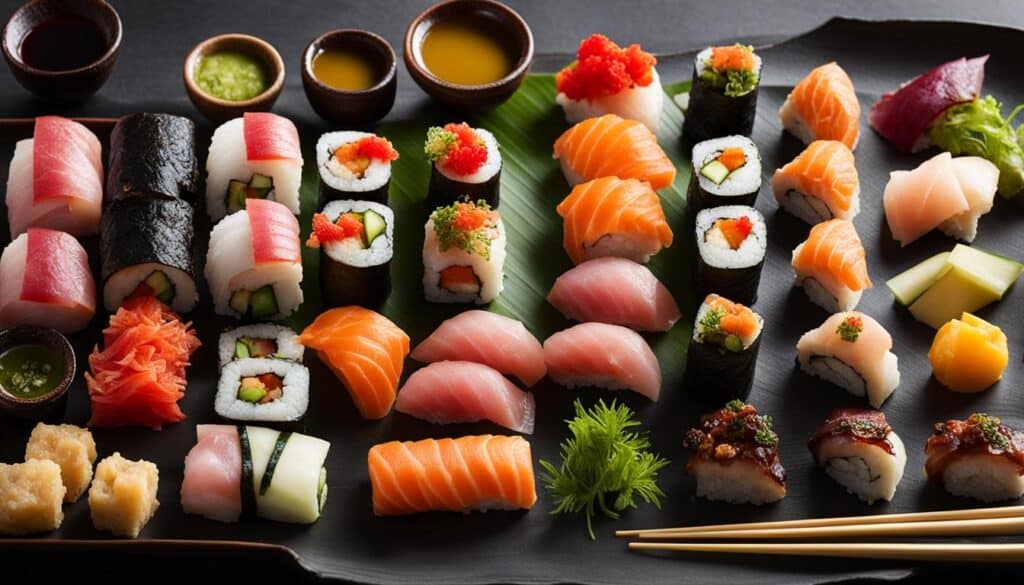
Indian Cuisine: A Symphony of Spices
Indian cuisine is a vibrant and diverse culinary tapestry that delights the senses with its bold flavors and aromatic spices. With a rich history dating back centuries, Indian cuisine is a testament to the fusion of flavors and culinary traditions across different regions of the country. From the fiery curries of the north to the fragrant biryanis of the south, each dish tells a story of cultural heritage and innovation.
The regional dishes of India offer a kaleidoscope of flavors and ingredients, showcasing the diverse culinary traditions of each state. Whether it’s the buttery richness of Punjabi cuisine or the coastal flavors of Kerala’s seafood delicacies, Indian cuisine never fails to impress with its variety and depth.
A Journey Through Regional Delights
“Indian cuisine is a celebration of bold flavors, where every spice is like a musical note coming together to create a symphony of taste.”
Let’s explore some popular regional dishes that exemplify the bold flavors and unique culinary traditions of Indian cuisine:
1. Biryani
Aromatic, flavorful, and layered with fragrant rice, succulent meat, and exotic spices, biryani is a beloved dish that originated in Persia but found its true identity in India. From the Hyderabadi biryani of Telangana to the Kolkata biryani of West Bengal, each region adds its own twist to this classic dish.
2. Rogan Josh
Hailing from the beautiful region of Kashmir, Rogan Josh is a lamb curry cooked in a rich, red gravy. The blend of spices, including Kashmiri chili powder, ginger, and fennel, gives it a distinct flavor and vibrant color.
3. Vada Pav
A popular street food from Maharashtra, vada pav is a spicy potato fritter sandwiched between a soft bun. This iconic snack is often enjoyed with a tangy chutney and is a go-to comfort food for many.
4. Chole Bhature
Originating from the northern regions of India, chole bhature is a classic Punjabi dish consisting of spicy chickpea curry (chole) served with deep-fried bread (bhature). It’s a hearty and satisfying meal that is enjoyed across the country.
5. Dosas
South India is famous for its dosas, thin and crispy savory pancakes made from fermented rice and lentil batter. Whether it’s the classic masala dosa or the spicy gunpowder dosa, these delicacies are a staple in the southern states.
| Regional Dish | Region | Key Ingredients |
|---|---|---|
| Biryani | Telangana, West Bengal, etc. | Basmati rice, meat (chicken/mutton/vegetables), spices |
| Rogan Josh | Kashmir | Lamb, Kashmiri chili powder, ginger, fennel |
| Vada Pav | Maharashtra | Potato, bun, spices, chutney |
| Chole Bhature | Punjab | Chickpeas, deep-fried bread, spices |
| Dosas | South India | Rice batter, lentils, various fillings |
Indian cuisine is a culinary journey that showcases the country’s rich cultural heritage and the skillful use of spices. It’s an invitation to explore the bold flavors, vibrant colors, and intricate techniques that make Indian cuisine a feast for both the eyes and the palate.
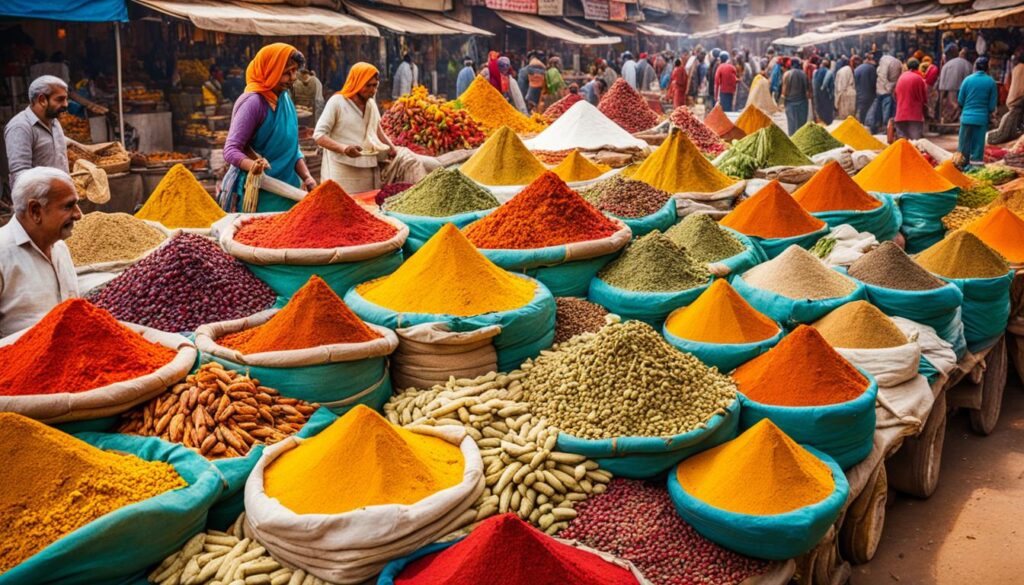
Mexican Cuisine: A Fiesta of Flavors
Mexican cuisine is a vibrant tapestry of flavors, encompassing a rich culinary heritage that extends beyond its iconic staples like tacos and guacamole. It reflects the country’s cultural vibrancy and culinary innovation, inviting us to indulge in a fiesta of bold and spicy flavors.
One of the highlights of Mexican cuisine is its diverse range of ingredients and techniques. For example, mole, a rich and complex sauce, showcases the artistry and depth of flavors that Mexican chefs are renowned for.
Let’s take a closer look at this iconic staple:
“Mole is the heart and soul of Mexican cuisine. Its deep, velvety flavors are the result of hours of careful preparation and the skillful combination of ingredients like chili peppers, nuts, spices, and chocolate. Each region in Mexico has its own variation of mole, showcasing the unique culinary traditions and flavors.”
Exploring Mexican cuisine allows us to delve into the country’s culinary heritage. It is a journey that reveals the influence of indigenous ingredients, Spanish colonization, and the fusion of culinary traditions over centuries.
Table: Regional Delights in Mexican Cuisine
| Region | Iconic Dish |
|---|---|
| Oaxaca | Mole Negro |
| Yucatan | Cochinita Pibil |
| Puebla | Chiles en Nogada |
| Jalisco | Birria Tacos |
Mexican cuisine is a culinary celebration that brings people together, not only through its delightful flavors but also through the communal experience of sharing a meal. It embodies the warmth and vibrancy of Mexican culture, inviting us to partake in a gastronomic fiesta that ignites the senses.
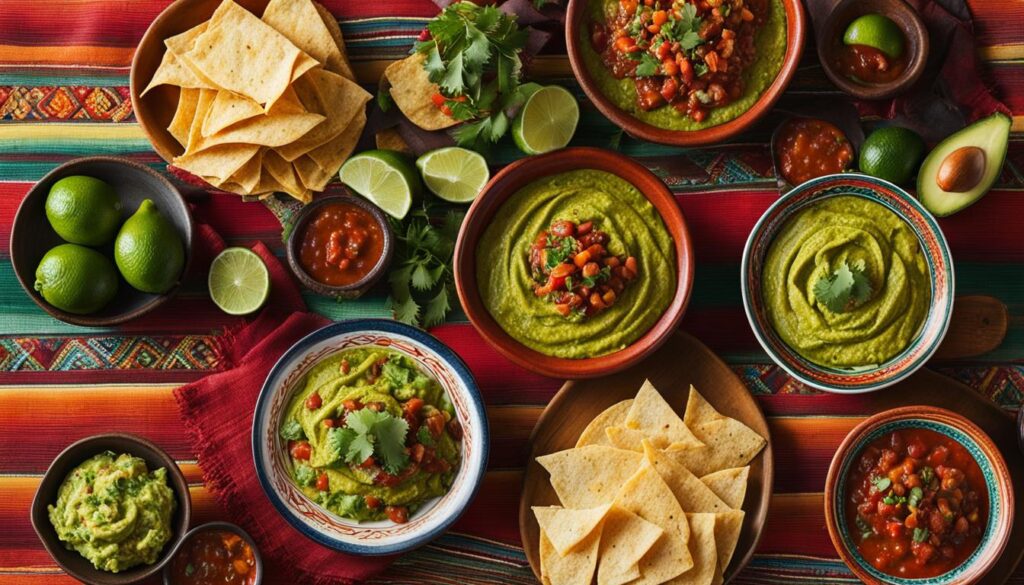
Thai Cuisine: The Harmonious Balance of Flavors
Thai cuisine is renowned for its ability to strike a perfect harmony of flavors. A burst of sweet, a dash of sour, a hint of salt, and a kick of spice come together to create a symphony on the taste buds. From fragrant green curries to tangy tom yum soup, each Thai dish is a delightful exploration of flavor balance.
The secret to Thai cuisine’s success lies in its use of fresh ingredients and the skilled artistry of Thai chefs. Thai cuisine embraces the contrasting elements of flavors, creating a unique culinary experience that is both exciting and satisfying.
Thai street food markets offer an authentic window into the heart of Thai culinary culture. Here, locals and visitors alike can savor the genuine taste of Thailand, immersing themselves in the vibrant street food scene. A stroll through one of these bustling markets reveals a vast array of stalls serving up mouthwatering delicacies, from fragrant pad Thai to spicy papaya salad.
One popular Thai street food dish is the iconic green papaya salad, also known as “som tam.” This refreshing salad combines crisp shredded green papaya, tangy lime juice, spicy chili, savory fish sauce, and a touch of sweetness from palm sugar. The result is a burst of flavors that invigorates the palate.
“Thai cuisine is a celebration of flavor balance, where every bite is a delightful surprise. From the bold and spicy to the sweet and sour, Thai dishes awaken the senses and leave a lasting impression.” – Local Thai Chef
Another must-try Thai dish is the fragrant green curry. Made with a paste of fresh green chilies, herbs, and spices, this curry is cooked with creamy coconut milk, tender meat or vegetables, and aromatic Thai basil. The result is a rich and aromatic dish with a perfect blend of heat and sweetness.
To fully appreciate the diversity and complexity of Thai cuisine, one must embark on a culinary journey through the streets of Thailand. Street food vendors offer an authentic taste of local favorites, allowing food enthusiasts to experience the true essence of Thai flavors.
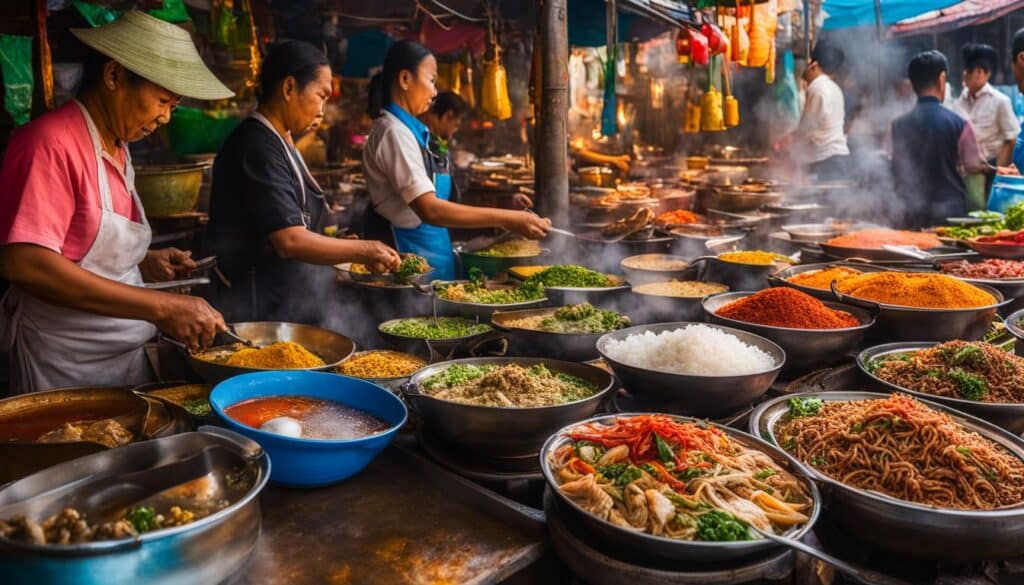
French Cuisine: The Epitome of Culinary Elegance
French cuisine is an exploration of sophistication and culinary artistry. It is a manifestation of the country’s rich cultural history and unwavering commitment to gastronomic excellence. From buttery croissants to intricate sauces, French cooking is a true embodiment of culinary mastery. Each bite is a symphony of flavors, expertly crafted to tantalize the palate and engage the senses.
At the heart of French cuisine is a deep appreciation for fresh, high-quality ingredients. The French have a reverence for their culinary heritage, with recipes that have been passed down through generations. The meticulous preparation and attention to detail in French cooking elevate each dish, transforming it into a work of art.
AlsoRead:- Boost Their Wellness With Healthy Weight Dog Food
French cuisine is deeply rooted in cultural history. It draws inspiration from the country’s diverse regions, each contributing its unique flavors and culinary traditions. From the rich stews of Provence to the delicate pastries of Paris, French cuisine reflects the country’s wide-ranging culinary landscape.
French cuisine is not simply about nourishment; it is an experience that transports you to the heart of France, immersing you in its rich cultural heritage and culinary traditions.
The French take immense pride in their culinary artistry. They understand that food is not just about sustenance but also about bringing people together. Meals in France are a time for connection, conversation, and celebration. The French have mastered the art of dining, creating an ambiance that is as captivating as the food itself.
French cuisine has had a profound influence on the culinary world. It has given rise to cooking techniques, such as the mother sauces, that form the foundation of modern gastronomy. French culinary schools have produced some of the world’s most renowned chefs, who continue to push the boundaries of culinary innovation.
French Culinary Delights
French cuisine boasts a myriad of iconic dishes that have captivated food lovers around the globe. Here are some examples:
| Dish | Description |
|---|---|
| Coq au Vin | A classic French dish of chicken braised in red wine, mushrooms, and bacon, creating a rich and flavorful stew. |
| Bouillabaisse | A traditional Provençal fish stew made with an assortment of seafood, flavored with saffron and served with crusty bread. |
| Ratatouille | A vegetable stew made with eggplant, zucchini, bell peppers, tomatoes, and herbs, showcasing the vibrant flavors of Provence. |
| Tarte Tatin | A caramelized upside-down apple tart, created by the Tatin sisters in the 19th century and now a French culinary icon. |
These dishes are just a glimpse into the culinary wonders of French cuisine. Each bite tells a story of tradition, craftsmanship, and passion. French cooking is a true art form, enchanting food enthusiasts with its elegance, finesse, and timeless appeal.
Exploring More International Culinary Delights
The culinary wonders of international cuisine extend far beyond the previously mentioned countries. From the flavors of Ethiopia to the Mediterranean delights and the vibrant cuisines of Latin America, there is a whole world of culinary treasures waiting to be discovered.
Ethiopian Cuisine: Communal Dining and Unique Spices
Ethiopian cuisine offers a unique dining experience centered around communal eating. Injera, a traditional sourdough flatbread, serves as the foundation for various stews and dishes. The rich flavors of Ethiopian cuisine come alive with the use of spices like berbere, a fiery blend of chili peppers, and the aromatic mix of mitmita. Explore the diverse flavors and vibrant colors of this East African cuisine.
Mediterranean Cuisine: A Fusion of Flavors
The Mediterranean region encompasses countries such as Greece, Italy, and North Africa, each with its own culinary traditions. Sample the fresh flavors of Greek salads, mezze platters, and the abundance of olive oil. Indulge in the rustic Italian pasta dishes and the aromatic spices of North African cuisine. Mediterranean cuisine is a rich tapestry of flavors that reflect the diverse cultures found along the Mediterranean coastline.
Latin American Cuisine: A Fiesta of Culinary Culture
Latin American cuisine is a celebration of the diverse culinary traditions found in Central America and Mexico. Immerse yourself in the bold and vibrant flavors of Mexican cuisine, from tangy ceviche to hearty enchiladas. Experience the tropical delights of Central American dishes like pupusas and gallo pinto. Latin American cuisine showcases a fusion of indigenous ingredients and European influences, resulting in a culinary fiesta for the senses.
Embark on a gastronomic journey and discover the delightful dishes of Ethiopian, Mediterranean, and Latin American cuisines. From the communal dining experience of Ethiopian cuisine to the fusion of flavors in the Mediterranean region and the vibrant culinary traditions of Latin America, there is an abundance of international culinary treasures to explore and savor.
Conclusion: Celebrating the Culinary Tapestry of the World
In the vast world of international cuisine, each dish we savor is like a thread in a magnificent tapestry, woven from diverse cultures and traditions. The culinary tapestry celebrates the rich diversity of flavors, ingredients, and techniques that have shaped the global gastronomy we know today.
Exploring international cuisine is not just an indulgence of our taste buds; it is an opportunity for cultural discovery and connection. Through the culinary delights of different countries, we embark on a journey that opens our hearts and minds to the beauty of celebrating diversity. Each bite is a chance to learn about the people and their way of life, their history, and their cultural heritage.
This celebration of culinary diversity bridges gaps, brings communities together, and fosters a greater understanding and appreciation of the global community. As we break bread together, we not only share a universal joy but also promote a sense of unity that transcends borders and languages. It is through the shared experience of discovering new flavors and cuisines that we build bridges of cultural exchange and create lasting connections.
FAQs
Q: What makes Global Gastronomy an interesting topic to explore?
A: Global Gastronomy allows us to delve into the rich tapestry of international cuisine, discovering a wide array of flavors and textures from different parts of the world.
Q: Where can I find some of the best chowder dishes?
A: Chowder enthusiasts can savor delicious chowder at Pacific Grove, located at 620 Lighthouse Ave, known for its exceptional cuisine in the heart of Pacific Grove.
Q: What are some popular dishes in Turkish cuisine?
A: Turkish cuisine offers a delightful range of dishes including flavorful kebabs, rich paella, and aromatic pesto, showcasing the culinary artistry of the region.
Q: How can I experience the diverse cuisines in the world without traveling extensively?
A: You can explore a variety of global cuisines by ordering online from restaurants that offer a wide selection of dishes representing different regions.
Q: What are the key ingredients used in traditional Pho dishes?
A: Pho, a Vietnamese delicacy, typically features a fragrant broth infused with spices and herbs, paired with either seafood or meat, creating a comforting and flavorful dish.
Q: Why does Indian cuisine hold a special place in the culinary world?
A: Indian cuisine consists of a diverse range of regional cuisines, each offering unique flavors and techniques that showcase the rich culinary heritage of the country.
Q: What sets Thai food apart from other cuisines in terms of taste and ingredients?
A: Thai food is known for its bold flavors and vibrant dishes that combine a variety of fresh produce, aromatic herbs, and spices, creating an unforgettable culinary experience.
